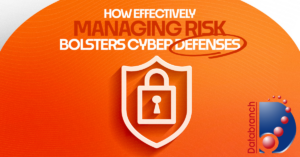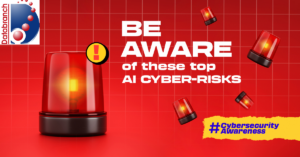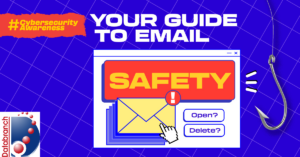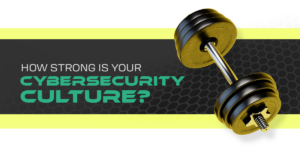
Are you prepared to face a cybersecurity breach, a natural disaster or a system failure? Such disruptive events can strike at any moment, causing chaos and confusion.
But don’t worry. With an effective incident response plan in place, you can handle any incident with confidence.
This blog is intended to help you enhance your plan simply and straightforwardly. So, let’s dive in and make sure you’re ready for whatever comes your way.
Best Practices for Effective Incident Response Planning
To be well-prepared for any incident, it’s important to follow the steps below:
1. Identify and Prioritize Critical Data and Assets
Knowing precisely what resources you have helps you allocate them efficiently during an incident, saving time and minimizing overall damage. Threat modeling is a process used in cybersecurity that is beneficial in this regard. It involves identifying potential threats and vulnerabilities to an organization’s assets and systems.
2. Establish a Dedicated Team
A cohesive and well-trained team with clearly defined roles can work together to ensure an efficient and effective response.
3. Conduct Regular Trainings
Regular training helps keep your team informed of the latest techniques and threats, ensuring they can handle any situation with confidence. Our Breach Prevention Platform and Security Awareness Training that comes with simulated phishing tests that will train your employees in spotting real world threats.
4. Implement Continuous Monitoring
Continuous monitoring systems can detect incidents early and take action before they escalate, potentially saving your organization from significant damage.
It is critical for any business to survive and thrive in today’s cybersecurity environment which is why Databranch provides a 24 x 7 proactive monitoring and alerting service for our managed clients. Visit us here to learn more and get started.
5. Establish Clear Communication Channels
Clear communication channels within your team and with external stakeholders ensure that everyone is on the same page during the response, minimizing confusion and errors.
6. Develop a System to Categorize Incidents
Categorizing incidents based on their severity and impact ensures that you can respond appropriately to each incident, minimizing long-term damage to your organization.
How we can Help
All businesses today must have a solid incident response plan against ever-evolving cybersecurity threats. That’s where Databranch can be your strategic partner and your first line of defense against cyberstorms.
If you’re uncertain about how to approach incident response planning, we can help you in the following ways:
- We’ll customize an incident response plan that aligns with your goals and challenges.
- We’ll identify vulnerabilities and rank incident response planning through risk assessments.
- We’ll help you build a fully equipped incident response team with clear roles.
- We’ll suggest and apply advanced security technologies to boost your detection and responsibilities.
- We’ll establish continuous monitoring to detect and respond to potential security incidents quickly.
- We’ll ensure that your incident response plan complies with legal and regulatory requirements.
- We’ll assist with post-incident analysis to refine response plans based on lessons learned.
Take Control of your Incident Response Plan
Don’t wait for a security breach to happen. Our team has years of experience and expertise to ensure the safety of your data. Take charge of your incident response plan now by contacting us at 716-373-4467 option 6, or [email protected] to schedule a no-obligation consultation with our team of experts.
You can also download our infographic to review the 4 stages of an incident response plan.
Read More

Worried about cyberattacks hitting your business? You’re not alone.
Cyberattacks pose a real danger to businesses like yours and without a solid incident response plan, your business won’t be able to recover quickly, resulting in extensive losses. The good news, however, is that an incident response plan can help.
Through this blog, we’ll show you the common mistakes, myths and misconceptions that can stop you from building a strong response plan. We’ll also share simple solutions that will help you safely navigate cyber challenges.
Avoid these Mistakes to Build a Strong Response Plan
Here are a few common mistakes that all businesses should avoid:
Mistake 1: Thinking cyber incidents only come from external attacks
- By ignoring internal threats, you’re creating opportunities for cyberattacks.
- Internal mistakes, like ineffective processes or human errors due to inadequate training, can also lead to data breaches.
Solution: Invest in your employees and set up a process
- Train your employees on cybersecurity best practices and establish protocols for handling sensitive information.
- Periodically review your internal processes. This will help you find and resolve issues in your procedures that could lead to data leakage.
- Looking for an effective cybersecurity training platform? Reach out to Databranch today to discuss our Breach Prevention Platform and Security Awareness Training that comes with simulated phishing tests.
Mistake 2: Focusing only on technology
- You can’t build an effective incident response plan by solely focusing on technology. While tech solutions are valuable, they’re only effective when they are efficiently leveraged by a team of trained personnel.
- A solid response plan goes beyond technology and includes communication plans, legal considerations and damage control strategies.
Solution: Build a complete response plan
- Train your response team on both tools and processes. Don’t focus solely on the technology.
- Develop clear communication protocols.
- Define clear roles and responsibilities.
- Ensure your team understands your legal obligation to report and comply with data breach regulations.
Mistake 3: Not updating your response plan
- It’s a common misconception that an incident response plan, once created, need not be updated. However, the truth is, without regular review, updates and practice, a response plan will become ineffective.
- Also, without simulations and post-incident analysis, you won’t be able to find the root cause of a problem and avoid future reoccurrence.
Solution: Consistently review your response plan
- Establish a process to hold regular reviews.
- Adapt your response plan to keep up with the evolving threat landscape.
- Conduct periodic simulations to refine your response strategy and ensure team readiness.
The above-mentioned solutions will help you build a proactive incident response plan. However, the best strategy is to get the help of experts, like Databranch, who have the proper resources and tools.
Databranch not only offers a suite of cost-effective managed services that proactively monitor and support your network and technology infrastructure, but our backup and recovery solution can quickly restore your environment and have you up and running if a disaster were to occur.
Building Resilience: Partner for a Robust Incident Response Plan.
Ready to fortify your business against cyberthreats? Use the form below to download our checklist and take a step towards starting your incident response plan.
All businesses today must have a solid incident response plan against ever-evolving cybersecurity threats. That’s where Databranch can be your strategic partner and your first line of defense against cyberstorms.
Choose a partner who can give you complete peace of mind. Reach out today at 716-373-4467 option 6, or [email protected].
Read More

In today’s rapidly evolving digital landscape, where cyberthreats and vulnerabilities continually emerge, it’s obvious that eliminating all risk is impossible. Yet, there’s a powerful strategy that can help address your organization’s most critical security gaps, threats and vulnerabilities — comprehensive cyber risk management.
Implementing a well-thought-out cyber risk management strategy can significantly reduce overall risks and strengthen your cyber defenses. To understand the profound impact of this approach, continue reading as we delve into the nuances that make it a game changer in digital security.
Cyber Risk Management vs. Traditional Approaches
Cyber risk management diverges significantly from traditional approaches, differing in the following key aspects:
Comprehensive Approach
Cyber risk management isn’t just an additional layer of security. It’s a comprehensive approach that integrates risk identification, assessment and mitigation into your decision-making process. This ensures there are no gaps that could later jeopardize your operations.
Beyond Technical Controls
Unlike traditional approaches that often focus solely on technical controls and defenses, cyber risk management takes a broader perspective. It considers various organizational factors, including the cybersecurity culture, business processes and data management practices, ensuring a more encompassing and adaptive security strategy.
Risk-Based Decision-Making
In traditional cybersecurity, technical measures are frequently deployed without clear links to specific risks. Cyber risk management, however, adopts a risk-based approach. It involves Threat Modeling, which is a deep analysis of potential threats, their impact, and likelihood.
Threat modeling helps businesses prioritize their risk management and mitigation strategies. The goal is to mitigate the risk of falling victim to a costly cyber incident
Alignment with Business Objectives
A distinctive feature of cyber risk management is its alignment with your overarching business objectives. It ensures that your cybersecurity strategy takes into account your mission, goals and critical assets, thereby making it more relevant to your organization’s success.
Holistic View of Security
Cyber risk management recognizes the significance of people, processes and technology, embracing a holistic view of security. It acknowledges that a robust security strategy is not solely dependent on technology but also on the people implementing it and the processes that guide its deployment.
This is why Employee Security Awareness training can make such an impact on your businesses cybersecurity posture. You and your colleagues are your company’s greatest risk, but also your greatest asset. Visit us here to learn more about our advanced cybersecurity training program.
Resource Allocation
By prioritizing risks based on their potential impact and likelihood, cyber risk management allows you to allocate resources more effectively. This means that your organization can focus on the areas of cybersecurity that matter the most, optimizing resource utilization.
The Role of Risk Tolerance in Cyber Risk Management
Risk tolerance is a pivotal aspect of enterprise risk management (ERM). It serves as a guiding principle, shaping your organization’s risk-taking behavior, influencing decision-making and providing a framework for achieving objectives while maintaining an acceptable level of risk.
Key components of risk tolerance are:
Willingness to Take Risks
Risk tolerance in cyber risk management is about your organization’s readiness to embrace calculated risks by acknowledging that not all risks can be eliminated. It shapes your organization’s ability to innovate and seize opportunities while maintaining an acceptable level of security risk.
The Capacity to Absorb Losses
This component of risk tolerance assesses your organization’s financial resilience. It’s about having a financial buffer to absorb losses without jeopardizing your core operations, ensuring that you can recover from security incidents without severe disruption.
Consideration of Strategic Objectives and Long-Term Goals
Risk tolerance should be in harmony with your strategic objectives and long-term goals. It ensures that your risk-taking behavior is aligned with your organization’s broader mission, avoiding actions that could undermine your strategic direction.
Visit us here to learn more about how to conduct a Technology Infrastructure Review and how to incorporate the results into your IT objectives roadmap.
Compliance and Regulatory Considerations
Meeting compliance and regulatory requirements is an essential aspect of risk tolerance. It means understanding the legal and regulatory landscape and ensuring that your risk management strategy adheres to these standards, reducing the risk of legal consequences.
Meeting the Expectations of Customers and Stakeholders
A critical part of risk tolerance is understanding and meeting the expectations of your customers and stakeholders. It involves maintaining the trust and confidence of these groups by demonstrating that you prioritize their interests and data security in your risk management approach.
Collaborative Path to Success
Now that you understand how cyber risk management empowers organizations like yours to strengthen your defenses, it’s time to take action. Download our comprehensive checklist to navigate the four essential stages of cyber risk management. This resource will guide you in implementing a tailored strategy that meets your unique needs.
Don’t wait for the next cyberthreat to strike. Reach out to Databranch today at 716-373-4467 option 6, or [email protected] to start the process of making your organization more secure. Together, we’ll enhance your digital defenses, secure your organization’s future and prioritize your security.
Read More

The rise of AI has sparked a revolution. Everyone, from industry giants to smaller enterprises, is captivated and eager to leverage AI’s endless possibilities.
However, amid the celebrations of AI’s merits, let’s not ignore its potential risks. A new array of cyberthreats emerges when intricate AI algorithms cross paths with malicious cyber elements. From AI-powered phishing schemes to ultra-realistic deepfakes, these dangers serve as a reminder to stay vigilant and prepared.
In this blog, we embark on a journey to explore AI benefits and risks. Our aim is to guide you in harnessing AI’s strengths while safeguarding against its potential pitfalls.
AI’s Positive Impact on Business
The top benefits of AI include:
Smart Data Analysis
AI’s expertise lies in swiftly deciphering massive data sets to uncover patterns. This ability proves invaluable in traversing through modern markets. The insights derived empower you to make well-founded decisions, steering clear of guesswork.
Boosted Productivity
AI’s automation prowess liberates your employees from mundane tasks, helping them focus on more critical tasks. Tedious and manual work can now be done seamlessly without human intervention, boosting productivity.
Faster Business Maneuvering
In an ever-evolving technological landscape, keeping up to date is paramount. AI empowers you to process and respond to real-time information promptly. This agility enables swift reactions to evolving scenarios, customer demands and opportunities.
AI’s Cyber Challenges
As we delve into the world of AI, we must also acknowledge the potential risks:
AI-powered Phishing Scams
Sneaky cybercriminals employ AI-driven chatbots to create impeccable phishing emails without the usual red flags, such as grammar errors. These attacks exploit human vulnerabilities, luring even the most vigilant to share sensitive information.
To bolster your defense, exercise caution with emails from unfamiliar sources. Scrutinize sender details, avoid suspicious links and employ anti-phishing tools for added protection.
Malicious AI-Generated Code
Cybercriminals harness AI tools for swift code generation, surpassing manual capabilities. These generated code snippets find their way into malware and other malicious software.
Defend against these intricate schemes by educating your team about them. Strengthen your defenses through layered security measures, such as firewalls, antivirus software and automated patch management.
Is your company looking for on-going cybersecurity training? Our Breach Prevention Platform and Security Awareness Training will give your employees the resources they need to spot real world phishing attempts. Contact Databranch today to learn more!
Deepfakes and Impersonations
AI-generated deepfakes can propagate misinformation, deceiving unsuspecting individuals and leading to fraud or character defamation. For example, in the current era, where many banks rely on online KYC (KYC or Know Your Customer is commonly implemented in banks to comply with regulatory requirements and mitigate the risk of financial crimes), malicious actors can create ultra-realistic videos using another person’s voice and image samples to open accounts for illegal transactions.
Identifying deepfakes necessitates a discerning eye. Among other factors, anomalies in skin texture, blinking patterns and facial shadows help distinguish genuine content from manipulated content.
Collaborative Path to Success
At the crossroads of innovation and challenges, knowledge takes center stage.
Our comprehensive eBook, “Shielding Your Enterprise: A Guide to Navigating AI Safety,” stands as your compass in the AI landscape. Fill out the form below to delve into AI’s intricacies and acquire strategies for responsible and secure utilization in your business.
If you need expert guidance, Databranch is here to help you navigate todays threat landscape. Contact us today at 716-373-4467 x6 or [email protected] and together, we’ll navigate AI’s realm, harness its power and ensure your organization’s safety.
Read More

Social media has significantly transformed the way we communicate and do business. However, this growing popularity also comes with potential risks that could cause harm to businesses like yours.
Unfortunately, many organizations remain unaware of these rapidly evolving challenges. In this blog, we will explore the dangers associated with social media and share practical tips to safeguard your organization’s reputation and financial stability so that you can safely reap the benefits of social media platforms.
Exploring the Risks
Social media presents several risks that you need to address, such as:
Security Breaches
Cybercriminals can exploit social media to steal sensitive information by creating fake profiles and content to trick people into sharing confidential data. Social media platforms are also vulnerable to hacking, which can have a negative impact on your business.
Reputation Damage
Negative comments from dissatisfied customers, envious competitors or even unhappy employees can quickly spread online and cause significant damage to your brand’s image within seconds.
Employee Misconduct
Certain employees may share offensive content or leak confidential information on social media, which can trigger a crisis that can be challenging for business leaders to handle.
Legal Accountability
Social media has the potential to blur the boundaries between personal and professional lives, which can, in turn, create legal liabilities for your business. If your employees make malicious remarks about competitors, clients or individuals, the public can hold you responsible for their actions. Employees may also face the consequences if their social media behavior violates the organization’s regulations.
Phishing Threats
Social media phishing scams can target your business and employees by installing malware or ransomware through seemingly authentic posts.
Fake LinkedIn Jobs
Cybercriminals often pose as recruiters on LinkedIn and post fake job listings to collect data for identity theft scams.
Securing Your Business
Taking proactive measures is essential to avoid social media risks, including:
Checking Privacy Settings
Set privacy settings to the highest level across all accounts, restricting your and your employees’ access to sensitive information. This includes removing Local Admin Privileges for employees.
Strengthening Security
Employ robust passwords and multifactor authentication (MFA) to bolster account security.
Establishing Clear Guidelines
Enforce clear social media rules for company and personal devices, customizing policies to fit your industry’s unique risks.
Educating Your Teams
Educate your team on social media risks, imparting safe practices to thwart scams and phishing attempts. Our Employee Cybersecurity Training not only offers an annual cybersecurity training, but also contains weekly micro-trainings to keep your employees up to date on real world threats.
Identifying Impersonation
Develop protocols to detect and manage fake profiles and impersonations swiftly. Remain vigilant and report any suspicious activity.
Vigilant Monitoring
Set up a system to monitor social media, promptly addressing fraudulent accounts or suspicious activity that could stain your brand image.
Act Now to Safeguard Your Business
Understanding the risks and adhering to social media best practices are crucial for businesses of all sizes. By following these guidelines, you can reduce your business’s vulnerability while reaping the rewards of social media.
For comprehensive insights into social media safety, download our eBook “From Vulnerability to Vigilance: Social Media Safety.”
Reach out to Databranch today at 716-373-4467 option 4 or [email protected] if your business is looking to increase their cybersecurity awareness.
Read More

Phishing scams remain one of the most prevalent and successful types of cyberattacks today, so being aware of the danger they pose to businesses like yours is extremely crucial. Your business could easily be the next victim if you don’t clearly understand how threat actors leverage phishing emails.
In this blog, you’ll learn the intent behind phishing emails, the various types of phishing attacks, and most importantly, how you can secure your email and business.
The Goal Behind Phishing Emails
Cybercriminals use phishing emails to lure unsuspecting victims into taking actions that will affect business operations, such as sending money, sharing passwords, downloading malware or revealing sensitive data. The primary intent behind a phishing attack is to steal your money, data or both.
Financial theft — The most common aim of a phishing attempt is to steal your money. Scammers use various tactics, such as business email compromise (BEC), to carry out fraudulent fund transfers or ransomware attacks to extort money.
Data theft — For cybercriminals, your data, such as usernames and passwords, identity information (e.g., social security numbers) and financial data (e.g., credit card numbers or bank account information), is as good as gold. They can use your login credentials to commit financial thefts or inject malware. Your sensitive data can also be sold on the dark web for profit.
Be vigilant and look out for these phishing attempts:
- If an email asks you to click on a link, be wary. Scammers send out phishing emails with links containing malicious software that can steal your data and personal information.
- If an email directs you to a website, be cautious. It could be a malicious website that can steal your personal information, such as your login credentials.
- If an email contains an attachment, be alert. Malicious extensions disguised to look like a document, invoice or voicemail can infect your computer and steal your personal information.
- If an email tries to rush you into taking an urgent action, such as transferring funds, be suspicious. Try to verify the authenticity of the request before taking any action.
Different Types of Phishing
It’s important to note that phishing attacks are constantly evolving and can target businesses of all sizes. While phishing emails are a common method used by cybercriminals, they also use texts, voice calls and social media messaging.
Here are the different kinds of phishing traps that you should watch out for:
Spear phishing — Scammers send highly personalized emails targeting individuals or businesses to convince them to share sensitive information such as login credentials or credit card information. Spear phishing emails are also used for spreading infected malware.
Whaling — A type of spear phishing, whale phishing or whaling is a scam targeting high-level executives where the perpetrators impersonate trusted sources or websites to steal information or money.
Smishing — An increasingly popular form of cyberattack, smishing uses text messages claiming to be from trusted sources to convince victims to share sensitive information or send money.
Vishing — Cybercriminals use vishing or voice phishing to call victims while impersonating somebody from the IRS, a bank or the victim’s office, to name a few. The primary intent of voice phishing is to convince the victim to share sensitive personal information.
Business email compromise (BEC) — A BEC is a spear phishing attack that uses a seemingly legitimate email address to trick the recipient, who is often a senior-level executive. The most common aim of a BEC scam is to convince an employee to send money to the cybercriminal while making them believe they are performing a legitimate, authorized business transaction.
Angler phishing — Also known as social media phishing, this type of scam primarily targets social media users. Cybercriminals with fake customer service accounts trick disgruntled customers into revealing their sensitive information, including bank details. Scammers often target financial institutions and e-commerce businesses.
Brand impersonation — Also known as brand spoofing, brand impersonation is a type of phishing scam carried out using emails, texts, voice calls and social media messages. Cybercriminals impersonate a popular business to trick its customers into revealing sensitive information. While brand impersonation is targeted mainly at the customers, the incident can tarnish the brand image.
Bolster Your Email Security
Emails are crucial for the success of your business. However, implementing email best practices and safety standards on your own can be challenging. That’s why you should consider partnering with a Managed IT service provider like Databranch.
We have the resources and tools to protect your business from cyberattacks, helping you to focus on critical tasks without any worry. We also have ongoing and interactive employee cybersecurity training that will help your company keep up with cybercriminals and their ever-changing tactics.
Meanwhile, to learn how to secure your inbox, download our eBook — Your Guide to Email Safety — that will help you improve your email security and avoid potential traps.
Read More

Your business, in all likelihood, already faces numerous challenges in today’s tech-driven world. However, the aftermath of an unexpected disaster can push your organization to its breaking point. This unintentionally creates opportunities for cybercriminals to launch devastating attacks, amplifying the chaos caused by such events.
Disaster preparedness should be a top priority for your business — not only for physical resilience but also for fortifying your digital defenses. By understanding how disasters fuel cyberattacks, you can proactively safeguard your business against these deceptive threats.
Understanding How Disasters Amplify Cyberthreats
Let’s look at four major ways disasters amplify cyberthreats and what strategies you can utilize to bolster your cybersecurity posture in the face of adversity.
1. Leveraging Diverted Attention and Resources
When a disaster strikes, the immediate focus shifts toward safety and recovery. Unfortunately, this diverts attention and resources away from maintaining and protecting your IT systems and networks.
With a reduced emphasis on cybersecurity measures, essential updates and monitoring may be overlooked, leaving your networks vulnerable to intrusion. Cybercriminals seize this opportunity to infiltrate your systems, compromise sensitive data and disrupt your operations.
To tackle this situation, establish a dedicated team responsible for monitoring and maintaining cybersecurity, even during times of crisis. For our managed clients, Databranch takes this one step further by implementing automated security systems to scan for vulnerabilities and apply necessary patches continuously.
By ensuring cybersecurity remains a priority, even in challenging times, you can minimize the risk of cyberattacks
2. Exploiting Fear, Urgency, Chaos and Uncertainty
Disasters create an environment of fear, urgency, chaos and uncertainty — prime conditions for cybercriminals to thrive in. They launch targeted attacks, such as deceptive emails or fraudulent websites, capitalizing on the sense of urgency and the need for quick solutions. By manipulating individuals into disclosing sensitive information, cybercriminals gain unauthorized access to critical systems. They could also sell this sensitive data on the dark web.
To combat this, educate your employees about the tactics used in phishing attacks and social engineering scams. Train them to recognize warning signs, such as suspicious emails or requests for sensitive information. Encourage a culture of skepticism and verification, where employees double-check the authenticity of requests before sharing confidential data.
By fostering a vigilant and informed workforce, you can fortify your defense against cybercriminals seeking to exploit fear and uncertainty. Visit us here to download our cybersecurity culture checklist.
3. Damaging Critical Infrastructure
Disasters can cause severe damage to your critical infrastructure, compromising components integral to your cybersecurity measures. Destruction of servers, routers or firewalls can weaken your defense mechanisms, allowing cybercriminals to exploit security gaps.
To address this challenge, ensure your critical infrastructure has backup and disaster recovery in place. Regularly back up your data, store it securely off-site or in the cloud, and test the restoration process to ensure it functions smoothly. Implement robust disaster recovery and business continuity plans, including provisions for cybersecurity.
By maintaining resilient infrastructure and regularly testing your backup and recovery processes, you can mitigate the impact of infrastructure damage on your cybersecurity.
4. Impersonation and Deception
In the wake of a disaster, cybercriminals often exploit the trust associated with relief organizations and government agencies. By impersonating these trusted sources, they deceive victims through phishing emails, messages or calls, tricking them into divulging sensitive information or engaging in fraudulent transactions.
To protect yourself from such scams:
- Encourage your employees to verify the authenticity of any communication received during a disaster.
- Advise them to independently contact the organization or agency through known, trusted channels to confirm the legitimacy of any requests.
- Establish robust security awareness training programs that educate employees about common impersonation tactics and teach them how to report them effectively.
By promoting a culture of caution and verification, you can defend against impersonation and deception tactics used by cybercriminals. Our phishing infographic is a great educational resource that can be shared with your workforce to prepare them for real life threats.
Act Now to Safeguard Your Business
Now that we know how cybercriminals can target your business during a disaster, prioritizing disaster preparedness and implementing the above-highlighted measures are important to navigate today’s ever-evolving technology landscape.
If you need expert guidance, Databranch is here to help fortify your disaster preparedness and cybersecurity efforts. Together, let’s ensure a resilient and secure future for your business. Contact us today at 716-373-4467 x6 or [email protected] to proactively safeguard what you’ve worked so hard to build.
Read More

A disaster preparedness plan helps businesses withstand any calamity. However, many businesses are unaware that a cybersecurity strategy is also crucial for building a robust disaster preparedness plan.
By incorporating cybersecurity into your emergency preparedness plan, you can better protect your business during critical incidents and minimize the impact of cyberthreats. This will help you enhance your business’s resilience, ensuring you’re better equipped to function in the face of unexpected challenges.
Best Practices for Effective Disaster Preparedness Planning in IT Security
Here are some practical tips for improving your organization’s disaster preparedness planning:
1. Protect Your IT infrastructure and Data
Your data is a gold mine for cybercriminals, and they’ll do anything to get their hands on it. That’s why it’s important to strengthen your IT infrastructure to withstand any disaster. Failing to implement adequate measures to protect your data could also attract fines and lawsuits.
Pro tip
- Firewalls, intrusion detection systems and encryptions can strengthen your IT security.
- Implementing a process to fix and update software patches regularly will help you avoid security vulnerabilities.
2. Back up Critical Data
Data loss can occur for many reasons, including cyberattacks and natural disasters. If your organization has not correctly backed up its data, recovery can be costly, time-consuming and seemingly impossible. Visit Databranch here to utilize out Recovery Time Calculator and see just how costly a disaster can be for your company.
If you want your business to survive, your disaster preparedness plan must ensure that your data remains clean, available and restorable.
Pro tip
- Regularly back up critical data.
- Back up your data off-site or in the cloud.
- Test backups regularly to verify their integrity.
Here at Databranch, our disaster recovery solution not only ensures that your data is restored to its former state, but restored quickly, with little to no downtime or interruption to your business.
3. Improve Employee Awareness
Your employees are your weakest link only if they don’t have proper training. By conducting regular security awareness training, you can improve their knowledge. It also increases your employees’ ability and willingness to follow security protocols during an emergency.
Pro tip
- Train your employees to identify phishing attempts, report suspicious activities and follow security protocols.
- Promote a culture of preparedness.
- Routinely test employee preparedness through simulated scenarios or drills.
Databranch offers ongoing and interactive training to help you stay secure and keep up with cybercriminals and their ever-changing tactics. Our Breach Prevention Platform and Security Awareness Training will give your employees the resources they need to spot real world phishing attempts.
4. Review Insurance Policies
Insurance plays a critical role in promoting disaster resilience and can help speed up your recovery after an incident. It’s a good idea to have property insurance, business interruption insurance, and cybersecurity insurance to cover all bases.
Pro tip
- Routinely review insurance policies to ensure you have proper coverage for potential risks and disasters.
- Maintain records of your assets, inventory and financial transactions to facilitate insurance claims and recovery efforts.
- Take the help of an insurance expert to understand current coverage and determine if additional coverage is required.
5. Evaluate Vendor and Supplier Preparedness
Disasters come unannounced and any weak link in your supply chain will only increase your vulnerability. Knowing if your vendor has a disaster preparedness plan is crucial for protecting your customers and overall business operations.
Pro tip
- Ensure your vendors’ or suppliers’ disaster preparedness practices align with your plans.
- Ask your vendor to share their disaster communication plan with you.
- Recommend that your suppliers test their disaster plan at least once a year.
- Guide them to an experienced service provider such as Databranch if they express needing assistance
6. Review and Revise Your Preparedness Strategies
It’s essential to test your preparedness plan for weaknesses and shortcomings regularly. By testing, you can fix the gaps and strengthen your strategy. A thoroughly tested plan will protect your data and help you avoid revenue loss during an outage, cyberattack or natural disaster.
Pro tip
- Extensively document changes in the organization, including people, processes and resources.
- Conduct mock tests to gauge the preparedness of your plan and employees.
- Take the help of an IT service provider to enhance your plan. They can also carry out timely audits to test the effectiveness of your program.
Databranch Can Help You Outlast Disasters
It can be challenging to build a comprehensive disaster preparedness plan that is robust and includes a thorough cybersecurity strategy on your own. By partnering with Databranch, your business can become resilient and outlast any disaster.
Contact us today at 716-373-4467 x6 or [email protected] to see how we can help your business build a solid disaster preparedness plan. You can also download our disaster preparedness eBook by filling out the form below.
Read More

In today’s rapidly evolving threat landscape, employee cybersecurity training is crucial. It acts as the frontline defense against cyberattacks, empowering your workforce to identify and mitigate potential threats. However, to ensure the effectiveness of your training program, you should take all the steps necessary to avoid common mistakes that can undermine your efforts.
Let’s uncover these pitfalls and learn how to steer clear of them. By addressing challenges head-on, you can maximize the impact of your employee cybersecurity training.
Stay proactive and informed to create a culture of security awareness that empowers employees as vigilant defenders against cybercrime. Together, we’ll equip your workforce with the skills they need to keep your organization secure.
Mistakes to avoid
Don’t let these preventable mistakes hinder your cybersecurity initiatives:
Approaching security training as a one-off activity
Don’t treat cybersecurity training as a mere checkbox exercise. Instead, foster a culture of continuous learning by providing regular opportunities for your employees to stay updated on the latest threats and security best practices. Make security awareness an ongoing journey rather than a one-time event.
Delivering dull, outdated and unrelatable training
Engagement is vital to proper training. Avoid dry and obsolete content that fails to capture your employees’ attention. Instead, strive to provide training that is timely, engaging and relatable. Leverage interactive platforms and user-friendly tools to create an immersive learning experience that resonates with your team.
Measuring activity instead of behavior outcomes
Don’t focus solely on tracking training completion rates or the number of simulated phishing exercises. While these metrics provide some insight, they don’t paint the whole picture. Shift your focus to measuring behavior outcomes, demonstrating a true understanding of security principles and driving tangible changes in employee behavior.
Creating a culture of blame and distrust
Approach security training as an opportunity for growth and improvement rather than a blame game. Foster a supportive environment where employees feel comfortable reporting security concerns and asking questions. Encourage a sense of collective responsibility, emphasizing that cybersecurity is everyone’s job.
Lack of support and participation from leadership
Leadership plays a crucial role in setting the tone for your security training program. Without visible support and active participation from executives and managers, employees may perceive security as a low priority. Encourage leadership to champion security initiatives and actively engage in training, showcasing their commitment to protecting the organization.
Not seeking help when needed
Developing and managing a comprehensive training program can be challenging, especially with limited internal resources. Don’t hesitate to seek assistance from IT service providers, such as Databranch, who specialize in cybersecurity training. We can provide the expertise and guidance needed to implement a robust and effective program.
Partner to succeed
By overcoming the pitfalls mentioned above, you can establish a strong security culture within your organization. If you think you need support, then don’t wait. We’re here for you. Our experience and expertise are exactly what you need to turn the tide.
With our experts on your side, security training will be the last thing you need to worry about. Reach out to Databranch today at 716-373-4467 x6, [email protected] or visit us here to learn more about our Breach Secure Now platform.
Additionally, download our checklist titled “How Strong is Your Cybersecurity Culture?” to assess whether you are on the right track. Together, we can fortify your defenses and safeguard your business from evolving cyberthreats.
Read More

















